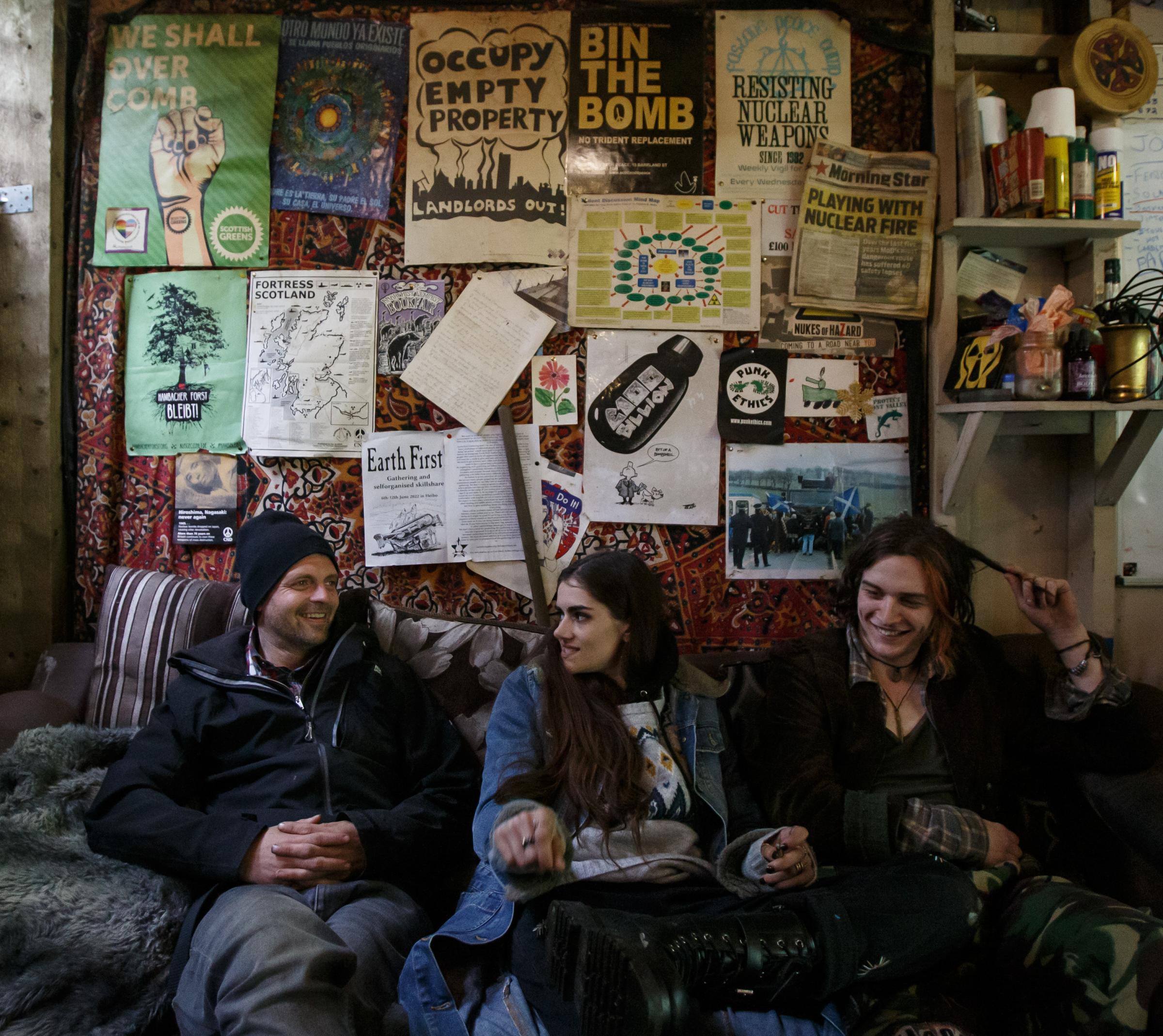
AFTER four decades of rebellion and activism, Faslane’s peace camp is still a thriving community taking the fight against nuclear weapons to the Ministry of Defence’s door.
The camp, which sits on the outskirts of HM Naval Base Clyde, is celebrating 40 years of existence, and with the renewed debate around nuclear weapons in the wake of the Russian invasion of Ukraine, its residents and visitors still see the significance of why it was established, and show no sign of stopping.
The Sunday National visited the peace camp on Saturday as the anarchist community were celebrating the milestone. Once you manage to find the place, tucked off the road near a bus stop but brightly signposted, you pass through a wooden gate and follow the path lined by brightly coloured caravans painted with messages of peace and resistance.
The campfire has a huge tent reaching into the trees above to provide shelter for the special occasion, and even a small stage has been set up. Friday night saw acoustic folk artists entertain activists, while Saturday’s planned festivity was a rave.

But the milestone isn’t about partying, many of the activists there had used the opportunity to gather at the front gates of Faslane, where the UK’s nuclear arsenal is housed, and plaster the sky-high barbed wire fences with banners.
The camp has a long history of residents making mischief for the security at the base, with multiple incursions onto supposedly heavily guarded MOD land – sometimes with bolt cutters, and others with sheer luck.

Renowned stories of an activist managing to put his hands on the nose of a nuclear submarine after one such break in, and another who managed to get inside the base and tap an officer on the shoulder, are just some of the moments which have defined the somewhat symbiotic relationship with security at Faslane.
When these break-ins happen, security is tightened and the activists have to switch tactics.
John Rogers, 36, who has lived in the camp for a year with his one-year-old cat Chickpea (below), said of the base security: “I’ve heard they do occasionally, maybe not thank us, but mention us and say we keep them on their toes.”

In January 2020, just a few months before the pandemic began, two women from the camp were arrested after getting in to Coulpourt, the loading jetty for Trident warheads, and were on site for an hour and a half before military police turned up.
Willemien Hoogendoorn (below) was one of those women, alongside her friend Syliva, 79. Hoogendoorn has her court case set for October and is planning to defend herself, as she has many times in the past and said the pair were inspired to take direct action on Auschwitz memorial day because nuclear bombs would kill “as many people as the whole holocaust”.

The 69-year-old told the Sunday National that the alarms in the base didn’t start going off until her companion hung up a banner inside the base, instead of outside the fence.
When police did arrive, they twice forgot to bring the correct key for the gate to escort them out. “It was farcical,” Hoogendoorn adds, “If she hadn’t put the banner up then nobody would have noticed.”
The age range of those taking up residence, or even just returning on a pilgrimage to the camp for the anniversary, varies widely, with some in the early 20s lending their labour to help build structures and make repairs. Stu Bretherton, 24, became involved with the camp last year through action at the naval base, and helps out with chores, as well as workshops and generally mixing with other activists.
He said: “I was aware the camp existed from a young age. I remember people mentioning and I’ve met people who stayed here over the years. It’s a long campaign but I’ve lived my entire life with the base as an ever-existing thing. If there was to be an incident, an accident, a strike or whatever, the whole central belt would be obliterated.”
For those who are older, many returned to the camp after taking a back seat from the front line of direction action – mostly because they had children and had to settle down.
One activist, now in his late 40s but did not wish to be named, said things changed when his then-partner became pregnant, but once he reaches retirement he intends to go back to the front line.

Another activist, who wished to use the pseudonym Wee Davie, came to join protests from Glasgow when he was a 15-year-old sporting a green mohican and the camp was established – in 1982. He said at the time the threat of nuclear destruction throughout the cold war terrified him, and that similar feelings had come back to him after Russia’s invasion of Ukraine.
He said: “The movement died down and there wasn’t as much need for it, but the protests were still going on in the background. Lately after the threat of nuclear war from Putin, I’ve started to think about it again and I think people are getting scared again.”
But the campaign isn’t just about removing nukes from the Clyde, those at the camp say their objective has always been to protest against the place of nuclear weapons in the world and end the threat they pose to humanity.
Rogers, originally from Manchester, added: “As long as they’re still here, as soon as someone launches them that’s the end of the entire northern hemisphere.”







